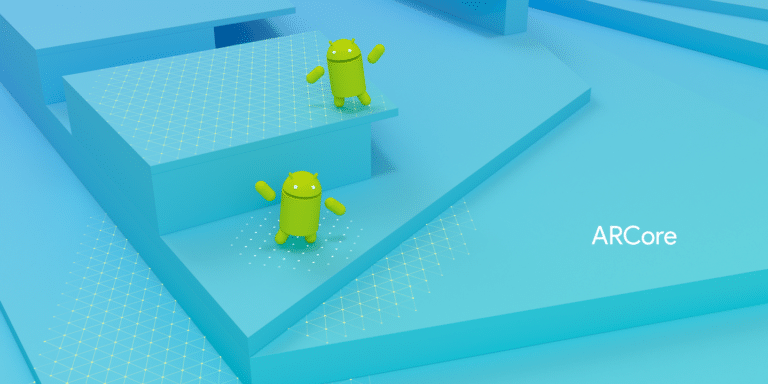
Data Point of the Week is AR Insider’s weekly dive into data from around the XR universe. Spanning usage and market-sizing data, it’s meant to draw insights for XR players or would-be entrants. To see an indexed archive of data briefs and slide bank, subscribe to ARtillry Pro.
Google’s ARCore — and the broader world of mobile AR — hit a milestone last week with 250 million compatible devices globally. This is up from 100 million devices in February, indicating not only a key milestone but a growth rate (which tracks well to our figures).
As we’ve examined, AR compatibility will phase in quickly for ARCore and ARkit, due to hardware replacement cycles which average 2.5 years. That’s more clear-cut in the iOS world, due to a few iPhone models for which Apple can control and tune sensors.
Android is a bit more complicated. For one, the hardware base is fragmented between several devices, making that sensor calibration difficult. The Android AR compatibility pace is also slower because Google can’t push firmware updates the same way Apple can.

From Google’s ARCore documentation:
What does it mean for a device to be supported? In short, it means it has passed our certification process.
Certification is important because we want users to have a good experience with your AR application. This is primarily related to sensitive motion tracking, which is done by combining the camera image and the motion sensor input to determine how the user’s device moves through the real world.
To certify each device, we check the quality of the camera, motion sensors, and the design architecture to ensure it performs as expected. Also, the device needs to have a powerful enough CPU that integrates with the hardware design to ensure good performance and effective real-time calculations.
The strength of Android is in the large diversity of devices available across the world. We are constantly working with manufacturers to make sure their hardware and designs meet these requirements. At the same time, we are working internally to make sure ARCore integrates well with every model we certify to provide good experiences for users.
Factors at Play
Another key factor is China. Because the Play Store is banned there, getting ARCore apps to those devices isn’t as direct. Last week’s 250 million figure includes China which is good, but it also means a big chunk of the addressable market is harder to reach.
But one thing that offsets that challenge is another looming reality: Mobile AR’s installed base is increasingly liberated from ARCore and ARkit. Given the rise of WebAR (8th Wall, Ubiquity6 et al), the true installed base approaches $2.8 billion global smartphones.
But another important distinction is that all of these figures define compatibility or total addressable market. Actual active users are a different story, and represent the figure that really matters. We’ve pegged that number at 129 million in our most recent forecast.

That number should tick upwards at a gradual pace in the coming few years. We could see some potential inflection points on the horizon, such as Harry Potter, Wizards Unite. Other wild cards could accelerate things, including a potential late-2019 killer app.
Like all things XR, it will be a moving target. We’re panning our sight steadily with that in-motion target to define, quantify and detect any new inflections. In fact, we believe that one flew mostly under the radar with last week’s Google Lens iOS integration.
We have an in-depth review and analysis of that development later this week. And there will be a lot watch and talk about in 2019. It will be another steady market-building year for AR. No big breakouts, but we’ll see important progress and opportunities for “building blocks.”
For deeper XR data and intelligence, join ARtillry PRO and subscribe to the free AR Insider Weekly newsletter.
Disclosure: AR Insider has no financial stake in the companies mentioned in this post, nor received payment for its production. Disclosure and ethics policy can be seen here.
Header image credit: Google
